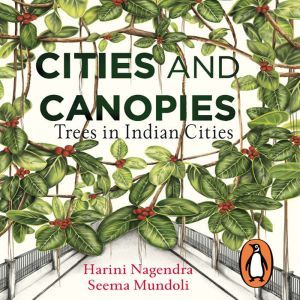Quotes
The book is a luscious romp through the fruit, fun, poetry, folk tales, history and healing properties of the trees we live with. (Live Mint)
Those who see timber in trees (and electricity in rivers) should read a book, just out, that can only be described as beautiful. Harini Nagendra and Seema Mundoli have given us a riveting work-Cities and Canopies: Trees in Indian Cities. (Scroll.in)
Cities and Canopies is a fresh, breezy cocktail-one that lifts your spirits yet strikes a note of melancholy, rekindling lost loves and associations, kindling new knowledge and wonder, as it maps the ecological and cultural histories of trees in cities and in our lives, past and present. (Hindustan Times)
The book will take you on a tour of the familiar as well as the unknown. (Week)
The writing is simple and straightforward throughout-and frankly this is a book that ought to be made mandatory reading for all school children and adults. (Open)
With an easy style of writing, and by breaking down scientific facts into relatable bits of information, the authors make the book accessible to a wide audience. (Mongabay)
Cities and Canopies, written by Harini Nagendra and Seema Mundoli, reveals myriad facts about the trees we've grown up watching and also gives us a painful reminder of their importance, given the tree-starved state of our urban landscape. (Financial Express)
Through a blend of science, history, memory and whimsy, Cities and Canopies draws lucid sketches of the most common trees found in Indian cities and the life-systems they support. (Indian Express)
With thousands of trees being felled in New Delhi, this is a key reminder of what the urban canopy does for the environment and for us. (Nature)
A new book [that] combines scientific rigour with anecdotes and nostalgia to highlight the significance of trees in urban life. (Forbes)



